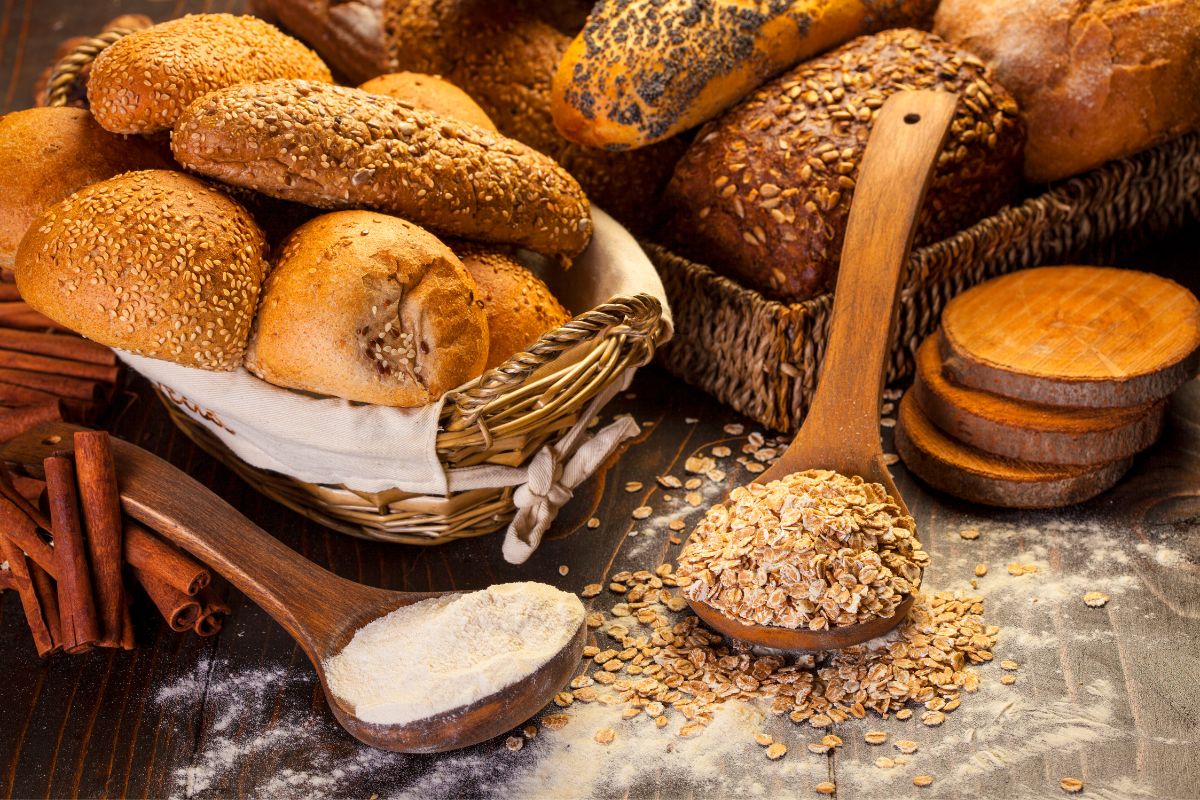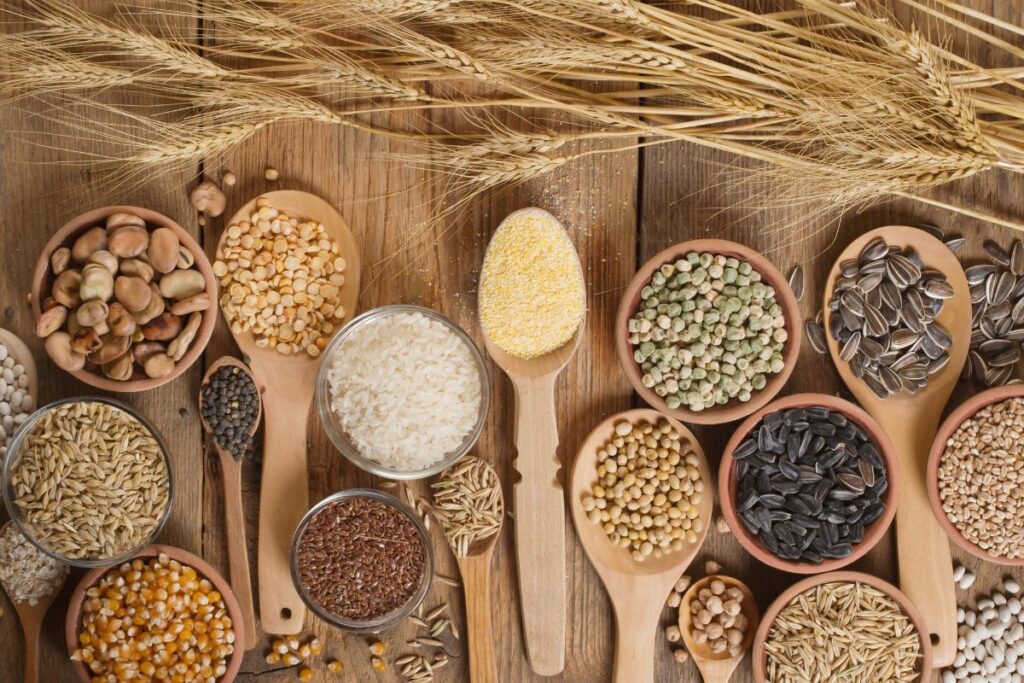Have you found yourself wondering about cereal grains? Maybe someone mentioned cereal grains and you aren’t sure what they mean? Or are you curious and want to know more? Whatever the reason is that brought you here, we have the answer for you!
Finding out what cereal grains are can be tricky, especially if you have never heard the phrase before.
You head online to get some clarity but are met with a wealth of conflicting and contradicting information that leaves you frustrated and overwhelmed.
Unsure what to do next, you wonder if you will ever know what cereal grains are.
Well, no more! Today, we are here with a complete guide to cereal grains. Keep reading to find out what cereal grains are and plenty of information about the different types of cereal grains.
What Are Cereal Grains?
Let’s dive straight into what brought you here! Cereal grains are seeds that come from grass.
These are seeds of plants that produce grains for the world’s food supply. These include rice, corn, wheat, rye, oats, barley, and millet.
Roughly 80% of the protein and 50% of the calories consumed by humans and livestock comes from cereal grains. That shows you just how important these grains are to feeding the planet!
Cereal grains are planted in the ground and grown on huge fields across the globe. The grains are then harvested and used to create a variety of food products.
Wheat can be milled to create flour used in baking and bread making, oats are the basis of a range of meals including oatmeal, and rice is consumed across the world in tasty dishes from curries to risotto.
These cereal grains are consumed as they are, as unmilled, or as processed grains.
There are endless food possibilities when it comes to cereal grains. It’s no wonder that we still rely on them for our food today!
How Long Have Humans Eaten Cereal Grains?
Cereal grains have been part of our diets for centuries. Archaeologists and paleoanthropologists widely agree that agriculture began around 10,000 B.C. in Mesopotamia (now Iraq), where wheat was cultivated and bred.
By 8000 B.C. millet and rice were being cultivated in Central Asia, traveling down to Greece by 6000 B.C. where farmers cultivated wheat, barley, and oats.
These grains were milled with stone pestles that farmers used to hammer them. They were then toasting the milled grains to enjoy.
Across the Atlantic, in South and Central America, maize was being cultivated in around 3000 B.C.
Ancient Egyptians were also cultivating wheat and barley back before 2500 B/C/, where they were also fermenting it to make beer.
We saw the first-hand mills to grind grain appear in 1200 B.C. and continued until the seventeenth century in most of America’s colonies.
The Industrial Revolution in the UK and across the British Empire also saw the techniques of farmers and millers adapt, as grains could be cultivated and milled with the use of heavy machinery, rather than men.
This has made it easier for cereal grains to be grown and produced, and they still make up a huge part of the world’s diet today!
What Are Considered Cereal Grains?
Seven main cereals are grown globally considered as cereal grains. These are:
- Sorghum
- Rye
- Oats
- Barely
- Rice
- Wheat
- Maize (corn)
Out of these seven, three cereal grains are considered to be the most important food crops in the world. They are:
- Maize (corn)
- Wheat
- Rice
It is these three grains that make up more than half of the calories consumed by humans. That’s a lot of wheat, rice, and corn being eaten!
What Are Cereal Grains Used For?

Cereal grains are used for a range of foods that humans eat. They are also used as animal feed for those bred and grown for human consumption.
Some cereal grains can be consumed as they are, whereas others will undergo milling or other food processing to feature as other products or ingredients in foods.
Cereal grains are used in a wide range of foods, many of them are probably sitting in your kitchen or pantry.
Here is a list of foods that feature cereal grains:
- Bread
- Pasta
- Tortillas
- Popcorn
- Oatmeal
- Grits
- Muffins
- Sweet or savory biscuits
- Pizza
- Waffles
- Pancakes
- Cake
- Refined grain breakfast cereals
- Flour
- Rye bread
This is just a glimpse at some of the most common foods made with cereal grains! Some of these will feature milled grains, like flour, whereas others, like pizza, will be heavily processed and have other ingredients added to them.
No matter what is added to cereal grains, they make up the basis of so many foods and recipes. You will always find some form of wheat, rice, or corn in a kitchen or pantry!
Of course, those with intolerances or allergies will struggle with some grains, especially wheat.
But thankfully, there are so many grain options to choose from, you are sure to find one that suits you and your diet.
Are Cereal Grains Expensive?
Generally, cereal grains are pretty affordable. Now, this does vary depending on how you are purchasing the grains.
For example, standard wheat flour is pretty affordable, along with bags of rice or pasta. But organic, specially bleached, or formulated flour will be more expensive.
The same applies to grains that are processed with other foods. The branding of these foods often determines the price too.
If you are buying a store’s own brand of flour, rice, or pasta, you can expect it to be affordable.
But as soon as you creep up the shelves, you will notice a price increase, especially for organic or specially formulated grains.
Final Thoughts
And there you have it! Cereal grains are a group of grains that come from grass.
Grains like barley, rye, wheat, rice, and corn are considered as cereal grains and make up around 50% of the calories consumed by humans.
It’s clear that for thousands of years, grains have been grown and enjoyed by people!








